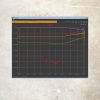
Tascam Model 24 vs Zoom LiveTrak L-20
Are the days of hardware recorders and portable studios behind us? Are such products only for amateurs? Tascam and Zoom say no.
I began my foray in audio on a Boss BR-900CD recorder. It had nine faders, two inputs, a bright orange screen and a scroll wheel. Many a memorable tune was produced on that little box, despite its limitations in comparison to what I’m now used to with a DAW-based rig.
Yes, my computer-centric setup gives me numerous channels of high-quality preamplification into pristine conversion, which the Boss did not. With DSP on my interface I have the choice to compress, EQ and saturate incoming audio to my heart’s content. The whole thing is contained in a roadworthy 4U rack. As far as sonic quality goes, it does the job every time, and then some.
But there’s just something that little Boss unit did for me that my schmancy DAW rig can’t touch. There’s something about not having a gazillion options that made me focus on what’s important while saving me a lot of time. Recording was often more spontaneous and less complicated. No computer restarts or software updates, no menu diving, plug-in list scrolling or I/O configuration. Just stick in the inputs and hit record.
TURN OF THE TIDE
Since in-the-box recording became mainstream, naturally the market underwent a drought of these all-in-one recorder-type products. Until now.
You may not call it a ‘resurgence’ but the last few months have seen the release of not one but two such devices: the Tascam Model 24 and Zoom LiveTrak L-20. Both have real life faders, 16 preamps, built-in effects, and an SD Card slot for PC-less recording. Their arrival is not in a spirit of nostalgia — they’re here as standalone value propositions, offering convenience, immediacy and portability in a computer-and-software flooded world. It’s not a throwback as much as it is a throw-forward.
Of course we were curious to take the pair for a spin. Given the similarities in their specifications, we also decided to review the two models against each other. Here are our impressions.
convenience, immediacy and portability in a computer-and-software flooded world. It’s not a throwback as much as it is a ‘throw-forward’
NEED TO KNOW

SETUP
LiveTrak L-20
The LiveTrak is very easy to nut out without a manual. First you need to select your choice of mode and sample rate with the three-way switches on the rear. I wanted it ready for PC-less tracking, so I set it to Card Reader mode at 48kHz and popped in a 32GB SD card. Then using the built-in screen and push knob scroll wheel, I created and named a new project.
The layout makes a lot of sense. Once you’ve plugged in your inputs simply record arm the correct channels (Rec/Play button), press Record, then Play/Pause. Six Monitor mixes, labelled A–F, are switchable for headphones or balanced line level monitor outs. These can be set up mix-layer style with the A–F buttons down the side of the last track fader. As the faders aren’t motorised, the LED strips indicate their positions when jumping between mixes. It’s pretty functional and doesn’t hamper your workflow all that much. What would be nice is the ability to duplicate a Monitor mix across multiple sends. The six outputs are locked to A, B, C, D, E, F mixes, and there’s no easy way to have A, B, and C output the same mix without mimicking fader levels on each one. Unless of course you switch them to receive the default Master mix, which may not always be practical.
Model 24
It’s surprising how much bigger the Model 24 is compared to the Tascam given they have very similar I/O credentials. There’s no question it’s a more solid build than the Zoom, evidenced by the nearly 7kg weight premium. Long throw faders make a difference too, and they feel pro. Unlike the Zoom there’s no need for the fader-latching business as the Model 24 has its own rows of Aux knobs for both monitor mixes and the effect send.
That’s right — there’s only one effect send, whereas the Zoom has two. This will mostly affect those who intend to mix their tracks entirely in the unit (as opposed to putting the tracks into a DAW post-recording), but I still see the lack of a second effects engine as a significant omission. Having to pick a reverb or a delay is traumatic. I want both. Which the Zoom lets me have. Granted, the Tascam contains a few “reverb + delay” presets to partially fill the need.
The Model 24 has four stereo tracks while the Zoom has two. Make that five if you’re counting the 3.5mm jack input to record your phone’s output (Channel 21/22), and a sixth with the Bluetooth input. And where the Zoom’s operating mode — be it USB interface, SD recorder or live mixer — is set globally, the Model 24 allows this to be set on a track-by-track basis with the three-position slide switch under each gain knob. Setting up for a session is super easy — record-arm each channel, then press the main Record button under the screen.


AT A GLANCE
| TASCAM MODEL 24 | ZOOM LIVETRAK L-20 | |
| Multitrack Recording | 24 channels | 20 channels |
| Resolution | 24-bit/48k | 24-bit/96k |
| USB Interface | 24-in/22-out | 22-in/4-out, 48k |
| Mic Preamps | 16 | 16 |
| Preamp Gain | +50dB | +60dB |
| Effects | 16 | 20 |
| Weight | 10kg | 3.7kg |
CONCLUSION
The Tascam Model 24 is best approached as a capable analogue live mixer with no-compromise multitrack recording capabilities. The Monitor outputs, extensive routing functions and graphic EQ all indicate it’s inclined toward the live stage.
On the other hand, the Zoom LiveTrak L-20 feels more at home in a studio than on stage. With six stereo headphone outputs and a built-in metronome, it seems the perfect tool for capturing band performances in a controlled environment.
Both will excel in either application. They’re both great live mixers in their own right. Both are very functional multitrack recorders. Both have a generous range of effects. And both can be used as USB interfaces with a computer if you so choose.
I can see myself using the Model 24 or L-20 instead of my rack rig when tracking bands live on location, then transferring the WAV files from the SD Card into a DAW in the comfort of my home studio for mixdown. Or it’d be perfect as a live mixer in a rehearsal studio, offering bands the option to easily record a jam without setting up extra recording gear. Or you can happily mix a show through it and hit record when the set begins. The more you think about it, the more you realise — while eclipsed by the rise of DAWs and fancy interfaces, the humble mixer/recorder certainly hasn’t lost its place in modern recording.















I am looking to replace my Roland VS DAW’s ( i have owned 3 over the years) all three has VGA outs so I could see what was happening on a large monitor rather than have to have a program like Pro Tools or Logic to go thru .. Roland had its own so that made it quite simple. I understand that maybe the Zoom allows for a similar video monitor using an Ipad (if so does that include my Macbook Pro?) .. I will be using this primarily building tracks as a composer/songwriter …and lastly I always felt Rolands reverbs to be miles better than any others …and isnt Zoom in the Roland family? Any suggestions would be much appreciated. Thank you for your excellent comparison.
The L-20 mixer app is available for iOS only (not MacBook Pros) and requires the separate Zoom BTA-1 Bluetooth adapter to work.
Dear Sir, is Zoom BTA-1 Bluetooth adapter must or any other BTA adapter/transmiter, thanks in advance!
How do these compare with the much less expensive Zoom r24. ( is an new model coming? This one is 12 years old!) and Tascam Dp32sd?
Besides having much fewer inputs, the R24 and DP-32SD are designed as studio recorders with more production and mixing tools (drum machines/amp simulations/effects). The L-20 is designed with a live mixing environment in mind, hence the output options and more spacious ergonomics.
I wished this article had covered a few other issues. Does the USB out let one store individual tracks or mixes on a Flash drive? No mention that only one of these units has a metronome for studio recordings. Only one of them has light meters on each fader. And neither of them have a decent size screen or better yet a VGA out to monitor.
Can you record a backing track and than record a new track while playing the backing track?
Yes. My main question (not clearly covered in the manuals) is whether I can do a stereo master mixdown with EQ and FX without having to go to a computer.
Yes, you can mix down recordings to a stereo track within the recorder without needing a computer.
Can either mixers be midi synced with my daw(reasons 10) ?
Yes, the Tascam Model 24 (as well as the Model 12 and Model 16) have MIDI synching capabilities. The Model 24 (which I own) does this via USB, whereas the Model 12 has actual MIDI ports.
Which one of the two is the best for recording and doing overdubs, recording extra instruments or vocals afterwards without having to use an extra computer?
I recommended my friend get a Zoom l12.
Apart from being a master at using his ancient 80’s EMU samplers he is not particularly tech savvy and I have to say he has really struggled with the Zoom. I tried to help him but I too find it really quite confusing.
Now Rob has gone back to his old portastudio.
The Tascam model 12 wasnt out when he bought the L12 but I reckon it might suit him well better.
I feel everso guilty that because of me he spent loads of money on a piece of kit he doesnt use…
Not saying its a bad piece of kit but it definitely doesn’t suit everybody
Tascam Model 12 has better PREAMPS than Zoom and strong build quality.
Tascam is for PRO-sumers, Zoom is for consumers, involved in not-professional events.
The HISS noise of Zoom preamps is unacceptable for a pro-guy.
Better listen to the L-20’s preamps before making such a statement. The Zoom preamps are suprisingly good and in no way inferior to the Tascam preamps. I highly doubt you’ve listened to both preamps, judging by your post.
Wich is the best for me? Just drums recordings for videos and online streaming.
Note: 2 pairs of hi-hats, cymbals, 6 tons, 1 Kick, 1 snare, 1 gong bass drum. Thanks for the help
Does the Zoom L-20 work USB with AMD computers? I have an AMD Ryzen 3900. I’m reading on their website that it’s not a guarantee.